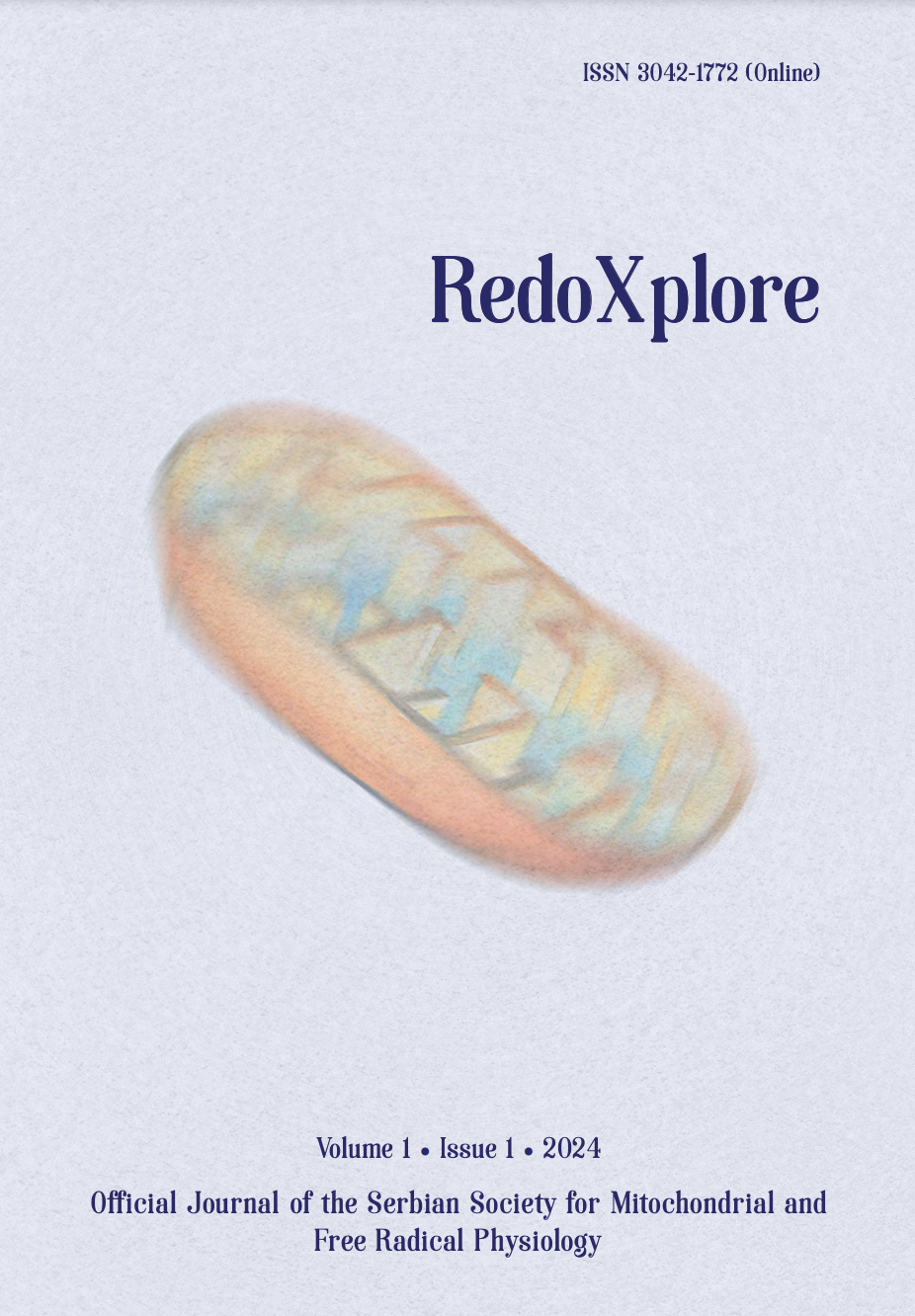
More articles from Volume 1, Issue 1, 2024
REDOX AND METABOLIC REPROGRAMMING OF BREAST CANCER CELLS AND ASSOCIATED ADIPOSE TISSUE - THE CORNERSTONES OF ADAPTIVE TUMOUR BEHAVIOUR
INSULIN MODULATES MITOCHONDRIAL STRUCTURAL AND FUNCTIONAL MOSAICISM IN BROWN ADIPOCYTES
NITRITE MITIGATES OXIDATIVE BURST IN ISCHEMIA/REPERFUSION IN BRAIN SLICES
NITRIC OXIDE, SUPEROXIDE AND PEROXYNITRITE – REDOX REGULATION OF THE CARDIOVASCULAR SYSTEM BY NITRO-OXIDATIVE STRESS AND S-NITROS(YL)ATION
DIETARY NITRATE AS PIVOT ON THE GUT MICROBIOTA-HOST REDOX COMMUNICATION
REDOX AND METABOLIC REPROGRAMMING OF BREAST CANCER CELLS AND ASSOCIATED ADIPOSE TISSUE - THE CORNERSTONES OF ADAPTIVE TUMOUR BEHAVIOUR
Institute for biological research Sinisa Stankovic-National Institute of Republic of Serbia , Belgrade , Serbia
Institute for biological research Sinisa Stankovic-National Institute of Republic of Serbia , Belgrade , Serbia
Faculty of Medicine, University of Novi Sad , Novi Sad , Serbia
Faculty of Biology, University of Belgrade , Belgrade , Serbia
Institute for biological research Sinisa Stankovic-National Institute of Republic of Serbia , Belgrade , Serbia
Faculty of Biology, University of Belgrade , Belgrade , Serbia
Editor: Bato Korac
Published: 29.08.2024.
Keynote lectures
Volume 1, Issue 1 (2024)
Abstract
A high proliferation rate and the malignancy of cancer cells are favoured by redox and metabolic plasticity, which is determined by the co-evolution of cancer cells with their host microenvironment. The tight functional connections between the mammary glands' epithelium and adipose tissue (AT) allow breast cancer cells to subjugate the AT and form a protumorigenic cancer-associated adipose tissue (CAAT). Our findings in luminal invasive ductal carcinomas in premenopausal women confirmed key cancer cell strategies - the Warburg effect, increased mitochondrial metabolism and redox adaptability, which are associated with a specific shift in the metabolic and redox phenotype of CAAT. Notably, the upregulated master redox-sensitive transcription factor Nrf2 appears to be responsible for the cancer cell-induced redox and metabolic shift of CAAT. We also investigated the role of Nrf2 in the metabolic co-evolution of cancer cells and CAAT during disease progression. Our results in the orthotopic breast cancer mouse model and in the co-culture of breast cancer cells with adipocytes confirmed the different spatiotemporal redox and metabolic properties of cancer cells and CAAT, established with respect to the Nrf2-coupled/uncoupled tumour microenvironment. The uncovered metabolic and redox strategies adopted by breast cancer cells according to CAAT properties and at different disease stages have helped to better understand the biology of the aggressive disease and to identify breast cancer vulnerabilities that could become therapeutic targets.
This research was supported by the Science Fund of the Republic of Serbia, #7750238, Exploring new avenues in breast cancer research: Redox and metabolic reprogramming of cancer and associated adipose tissue - REFRAME.
Citation
Copyright

This work is licensed under a Creative Commons Attribution-NonCommercial-ShareAlike 4.0 International License.
Article metrics
The statements, opinions and data contained in the journal are solely those of the individual authors and contributors and not of the publisher and the editor(s). We stay neutral with regard to jurisdictional claims in published maps and institutional affiliations.






